Guitar World Verdict
This new take on John Mayer's signature Silver Sky is the best PRS SE guitar yet. It's hugely impressive in all regards, and affordably priced, too.
Pros
- +
Price, build, playability, sound, all with PRS’s ‘nerdy’ attention to detail.
- +
Great neck shape – it really doesn’t feel like a generic Fender copy.
Cons
- -
With only four colours and no options, it’s definitely ‘what you see is what you get’.
You can trust Guitar World
Whatever our (or your) feelings are about the validity of the Silver Sky – PRS’s cover version of an absolute Fender classic in collaboration with John Mayer – it’s very hard to argue with the instrument we have in front of us.
While the USA Silver Sky sits more than comfortably alongside Fender’s top-of-the-line production models, not to mention virtually every other high-end bolt-on, this new SE version is simply one of the finest examples of large-production guitar making we can recall.
Aside from the ‘SE’ motif on the headstock face and the clear statement of manufacturing origin on its back, you’d be hard put to think this was anything else but an instrument that retails for at least twice as much money. And we’ve barely pulled it from its gigbag.
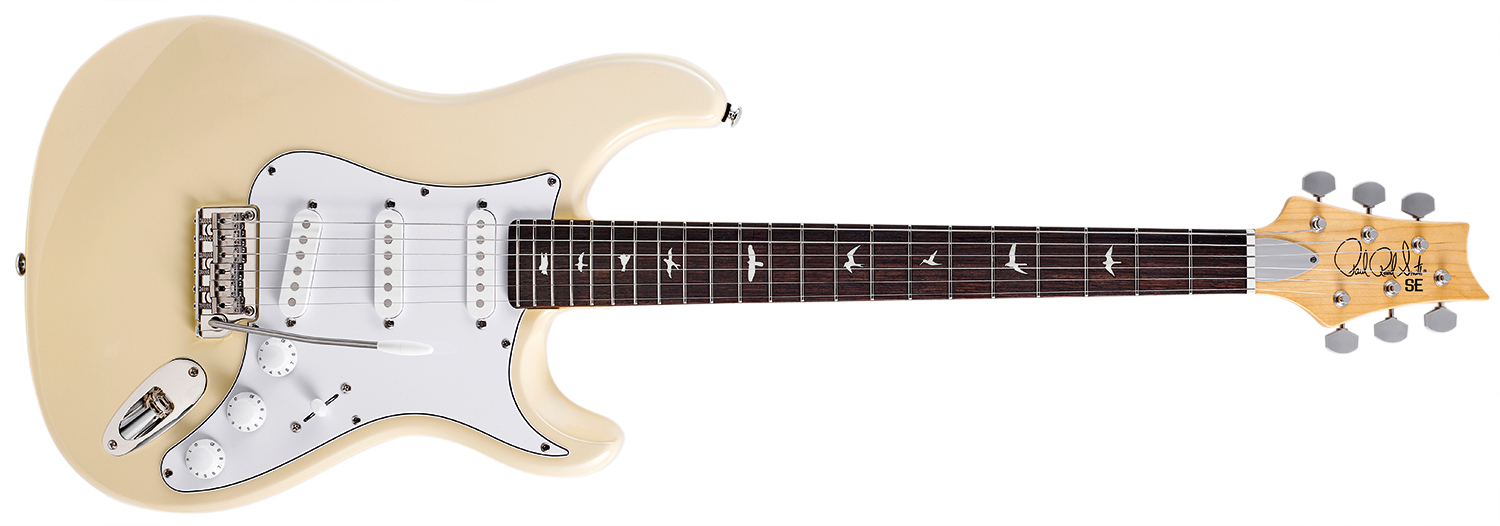
This is certainly a very close rendering of the USA model, but there are numerous differences necessary to bring the guitar in at its downsized price point. First off, its specification tells us the body here is poplar – not alder like the USA guitar – though you can’t see that under the yellow-blonde Moon White finish, one of four options.
Aside from the extra dishing in the treble cutaway and rounded nose to the heel, there’s little variation from the classic blueprint. Of course, if you draw around a Fender then do the same here you’ll see some differences, notably the slightly deeper bass-side cutaway, a less protruding heel and, of course, the trademark scoop in the treble cutaway.
Four years on from its launch and we’ve certainly got used to the Silver Sky’s reverse and back-angled PRS headstock. The vintage-style tuners, with their silver plastic buttons matching the truss rod cover, not only function perfectly but like any good guitar we rarely touch them. And not only is this a typically in-tune guitar, it stays that way.
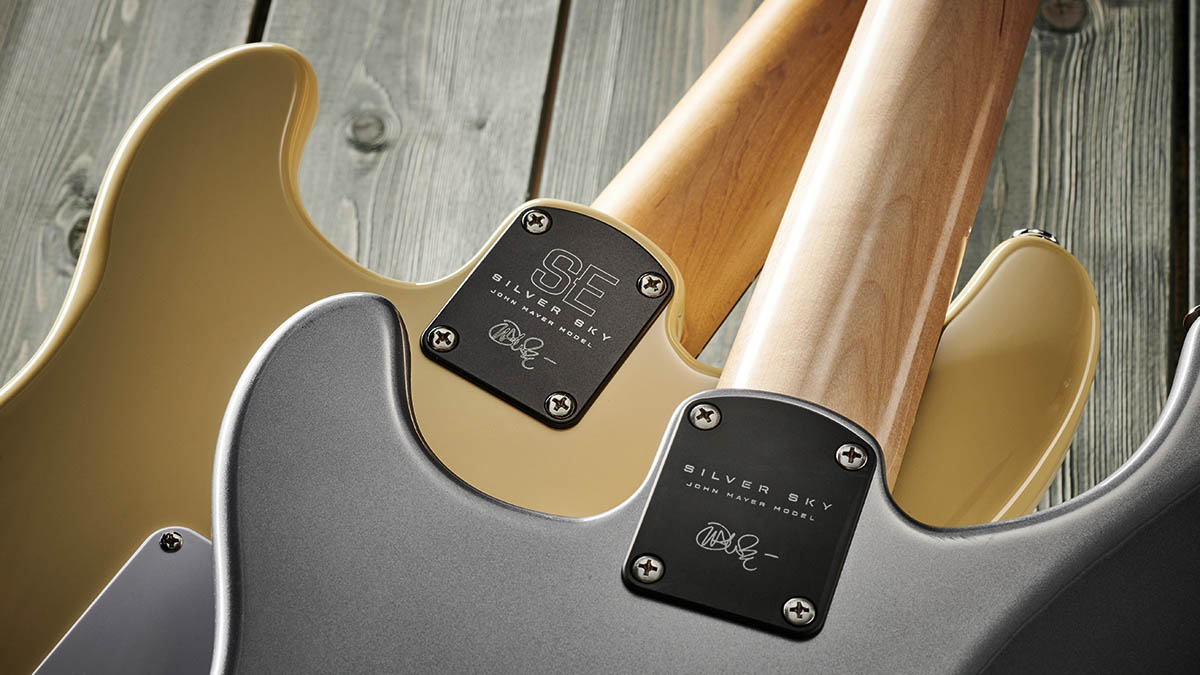
The nut looks oversized for the style, but this is PRS and there’s a reason: it sounds better. No, it’s not real bone like the USA models, it’s a synthetic bone – the formulation of which was carefully chosen by PRS – and is cut superbly and certainly doesn’t impair the vibrato.
Rather than cloning the Silver Sky’s six-post vibrato, here we have what is essentially the two-post vibrato we’ve already seen on PRS’s Fiore. In fact, as PRS’s Jack Higginbotham tells us, this all-steel design came first. One of the updates on the USA Silver Sky is its rather beautiful moulded output jack dish and the exact same part is used here.
From here on in, though, there’s little that PRS has brought, visually, to the table. We get proprietary control knobs very much in original Strat style with the exception of their missing function legends – PRS assumes you know your volume from your tones!
The pickup selector switch cap is a redesign but barely affects anything. We still get the exact same pickup selections on the five-way pickup selector as the time-honoured Strat: the centre control (tone 1) works on both the neck and middle pickups; the lower control (tone 2) is solely for the bridge pickup. Nothing new there.
Feel & Sounds
The engagement with this guitar, and why it feels more expensive than it actually is, is simply down to its lightly golden tinted satin-finished neck. As we evaluate elsewhere in this feature, it’s a close cousin (but not identical) to the USA Silver Sky.
The headstock is scarf-jointed to the main shaft, just like PRS’s USA bolt-on models, and here the two pieces are nicely matched. It manages quite a full rounded ‘C’ feel, which suggests it’s bigger than it is. Depth-wise, it measures close to the USA Silver Sky models we’ve previously evaluated: 21.3mm at the 1st fret, 24.3mm by the 12th (fractionally slimmer than the USA models we’ve measured) and 41.8mm wide at the nut.
One difference here is the slightly flatter fingerboard radius of 216mm (8.5 inches), as opposed to the USA model’s original Fender radius of 184mm (7.25 inches), plus frets that falls into the medium-size category (approximately 2.4mm wide by 1.1mm high) and are exceptionally fitted and mirror-polished.
The fret slots are filled on the fingerboard edges and the ’board is actually a nice dark classic rosewood; we’re fans of these smaller and more subtle bird inlays, too. The slight rounding of the neck heel and the PRS trademark scoop on the treble horn all just help to make high-fret access very comfortable.
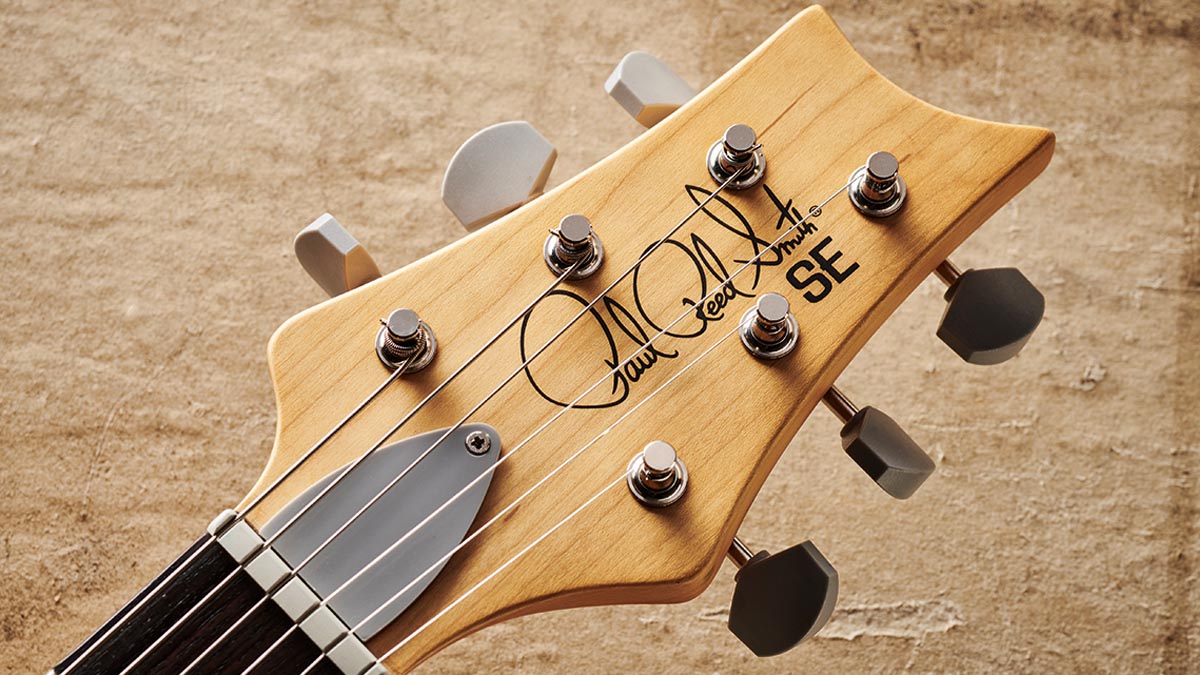
Then there’s the perfect-for-the-style weight. At 3.1kg (7.1lb) it just feels right – light in weight but not insubstantial, and the lightest of the Silver Sky/Fiore family we’ve tested. We haven’t plugged in yet, but it’s hard not to fall for this Sky’s charms already.
As we say, there are no new sounds here and if you want the ‘seven sound’ mod, or even a half- or full-blend circuit, you’ll have to do it yourself. But it’s a PRS guitar and anything that gets signed off by master guitar-maker Paul Reed Smith, not to mention master musician John Mayer, isn’t going to sound rubbish, is it?
There’s a balanced fullness to the voice that you hear unplugged, which certainly suggests the guitar is working as one. Even the way that the vibrato is set up seems to enhance what we hear. The high-end especially isn’t over-sharp or clangy. We’d call it sweet, a little softer than we hear from a heavier ash-bodied Strat reference (one of many we used on this test). There’s obvious depth, too.
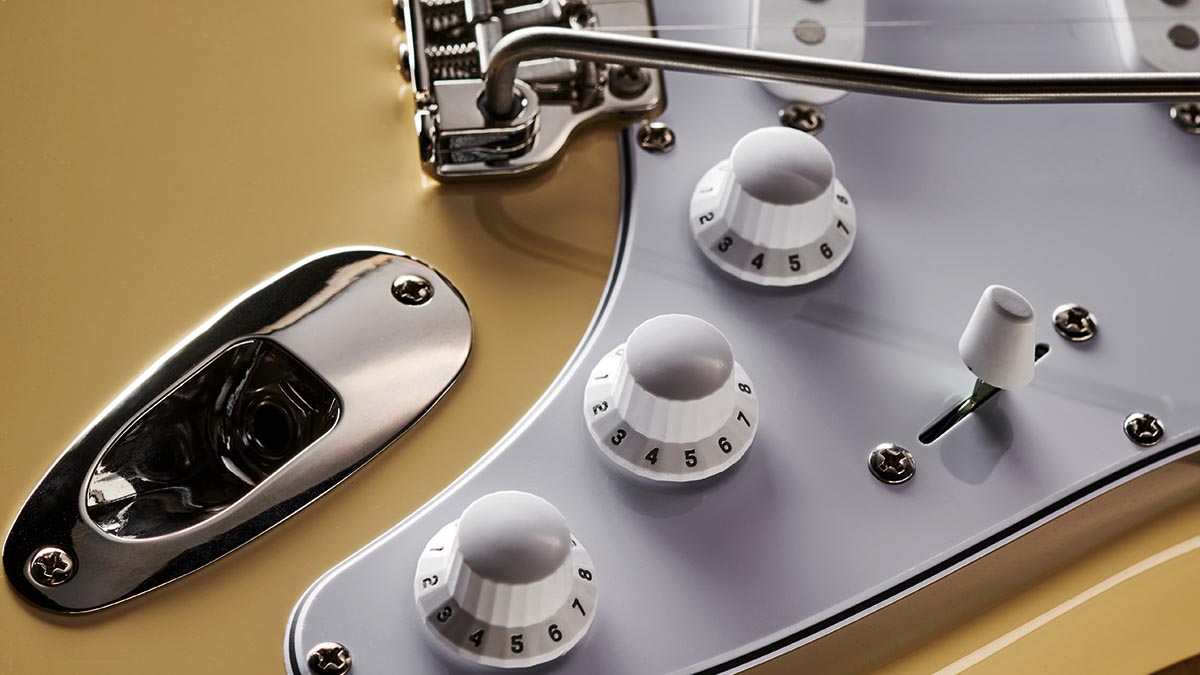
Plugged in, well, it sounds like a Strat and we all have our favourites. First off, there’s a pretty good balance from neck to bridge, which isn’t always the case. Obviously, you can tweak the pickup heights to suit your idea of a great Strat sound, but like virtually every other facet of this guitar, we don’t feel we want to touch a thing, even though the pickups (treble to bass) are tilted less than most of our references.
What we get in every position are very strong examples of the sounds many of us have grown up with. The depth of the full-sounding neck pickup with its percussive smash to the start of the note, for example, gets a big tick.
Both hum-cancelling in-between sounds bounce and cluck, while the bridge is obviously bright but on the right side of thin, and the middle pickup, which many of us forget, is a spot-on balance between the plummy neck and the thinner bridge. Exactly as it should be, although – not for the first time with a PRS guitar – what we hear almost sounds enhanced or expanded. Whatever, it’s a great-tasting dish.
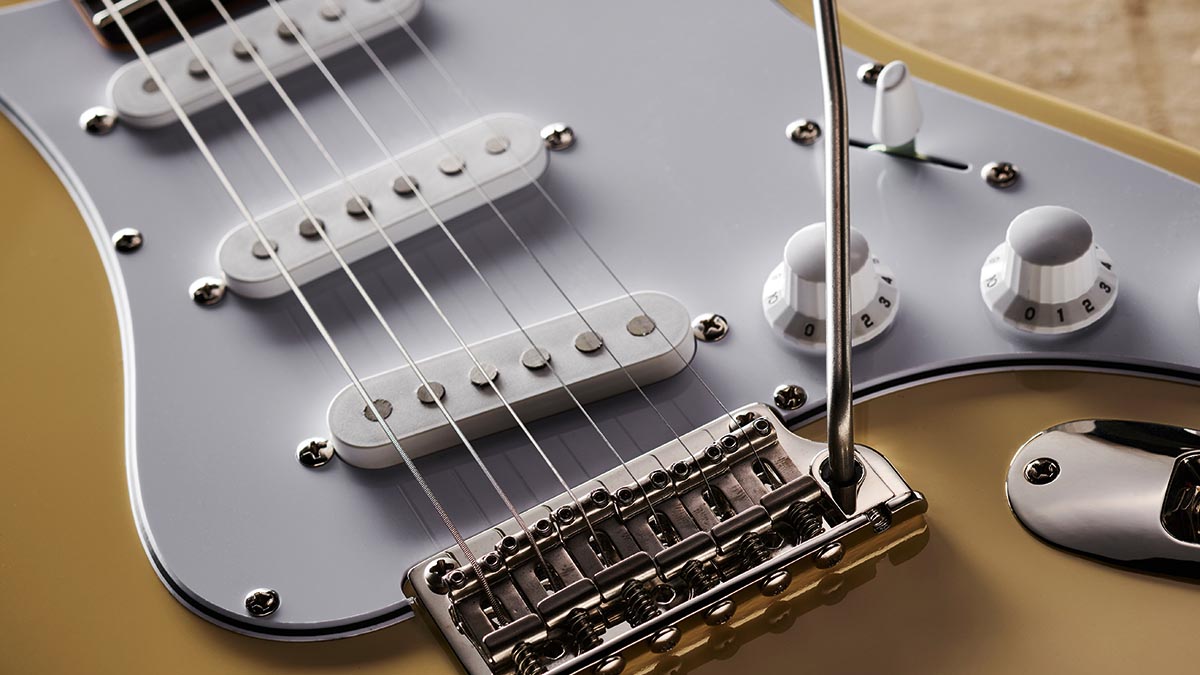
There are plenty of ways to set up a vibrato such as this. As supplied, the front sits approximately 1.6mm above the body, while the back is in contact with the face of the body so it slightly back-angles from front to back. You don’t get any up-bend set like this, and things do feel a little stiff with four springs in place, but it does mean that when you hit a big G string bend the other strings don’t go flat.
In other words, it’s set more like a blocked vibrato – all the sound, none of the tuning issues. Checking the string heights, it’s slightly above PRS spec at 1.78mm on both high and low Es measured at the 12th fret with light relief, which overall makes for quite a tough feel, something to bend against and enough ‘air’ for slide, certainly from the middle of the ’board and upwards.
Okay, so we’ve played all the major SE models over the past two decades. It’s not hard to see, feel and hear the progression, and whether it’s the neck shape or the smooth satin neck-back finish, this SE is the best we’ve played.

Verdict
Since 1985, PRS has probably done more than any maker to raise the level and art of guitar making. There are few makers – from one-man workshops to full-blown production manufacturers – that haven’t paid attention. It was once believed within the company that the offshore SE line would somehow devalue that craft.
There is nothing cut-price here and the quality of build, feel and sound blurs – perhaps even erases – the whole country of origin consideration
Many of us would beg to differ, of course, but if proof were still needed, here it is. There is nothing cut-price here and the quality of build, feel and sound blurs – perhaps even erases – the whole country of origin consideration. It’s not where but how that’s important.
Yes, it’s a Fender Stratocaster with the wrong shape and name to the headstock, which makes awarding a 5/5 – which is what it undoubtedly deserves – difficult. It’s frustrating, too, that there’s not a maple fingerboard option available, and probably won’t be for a considerable length of time, let alone an HSS variation.
Clearly, PRS has concentrated on getting what you see bang on, and that’s hard to argue with. A simply superb and hugely affordable rendering of the foundation of the electric guitar.
Specs
- PRICE: $849 / £895 (inc gigbag)
- ORIGIN: Indonesia
- TYPE: Double-cutaway solidbody electric
- BODY: Poplar
- NECK: Maple, 635JM profile, bolt-on
- SCALE LENGTH: 648mm (25.5”)
- NUT/WIDTH: Synthetic bone/41.8mm
- FINGERBOARD: Rosewood, small bird inlays, 216mm (8.5”) radius
- FRETS: 22, medium
- HARDWARE: PRS-designed 2-point steel vibrato, PRS-designed vintage-style tuners – nickel-plated
- STRING SPACING, BRIDGE: 54mm
- ELECTRICS: Three PRS 635JM ‘S’ single-coils, 5-way lever pickup selector switch, master volume, tone 1 (neck & middle), tone 2 (bridge)
- WEIGHT (kg/lb): 3.21/7.1
- OPTIONS: None
- RANGE OPTIONS: The USA Silver Sky, with either rosewood or maple ’board, costs £2,620 (inc gigbag)
- LEFT-HANDERS: No
- FINISHES: Moon White (as reviewed), Ever Green, Stone Blue, Dragon Fruit – polyurethane gloss body; polyurethane tinted satin neck
- CONTACT: PRS Guitars

Dave Burrluck is one of the world’s most experienced guitar journalists, who started writing back in the '80s for International Musician and Recording World, co-founded The Guitar Magazine and has been the Gear Reviews Editor of Guitarist magazine for the past two decades. Along the way, Dave has been the sole author of The PRS Guitar Book and The Player's Guide to Guitar Maintenance as well as contributing to numerous other books on the electric guitar. Dave is an active gigging and recording musician and still finds time to make, repair and mod guitars, not least for Guitarist’s The Mod Squad.
"A traditionally spec'd, workhorse machine that sounds like a Les Paul should while offering some limited-edition aesthetics": Gibson Les Paul 60s Double Trouble review
“It’s the guitar I’ve dreamed of making for years”: Jackson and Bring Me the Horizon’s Lee Malia champion the rise of the metal offset with new signature Surfcaster











